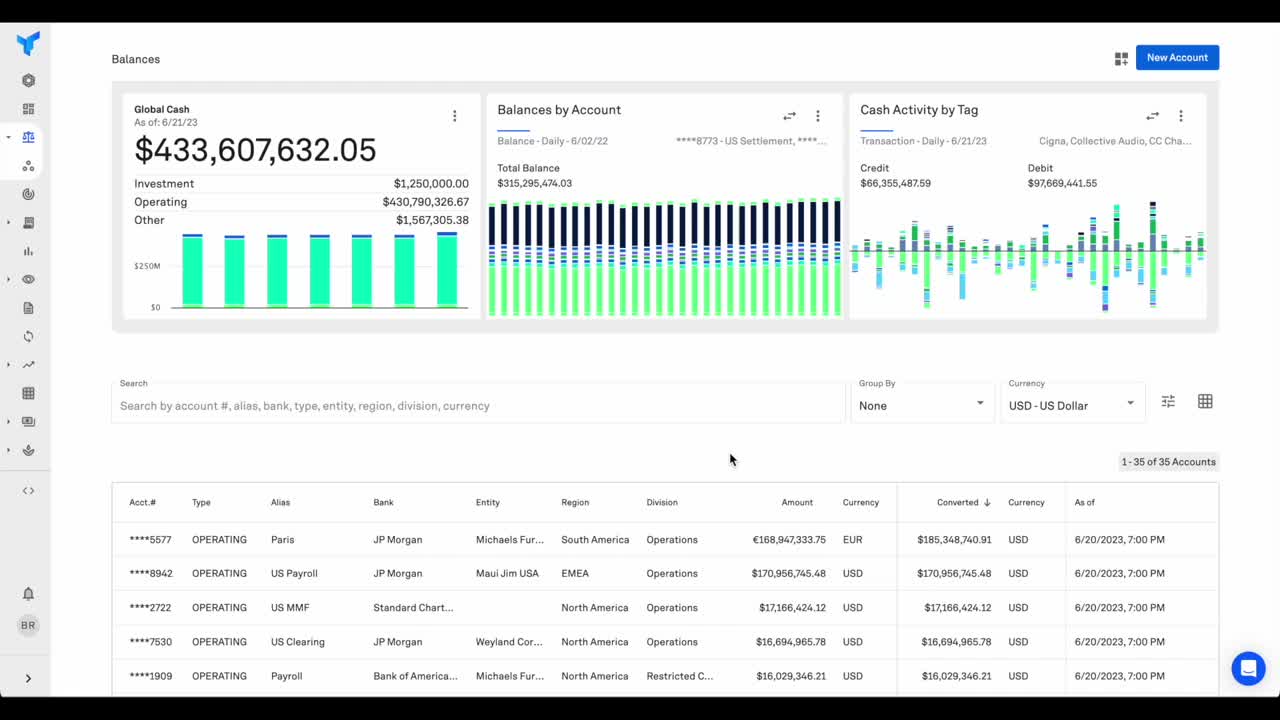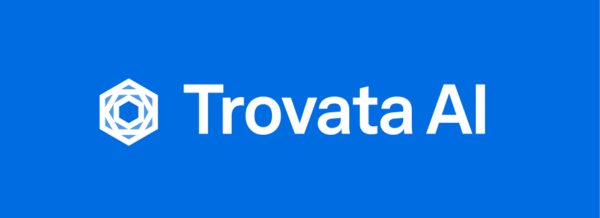Working in a treasury department is no simple task. It’s a journey fraught with risk and reward.
You might compare it to being an adventurer looking for treasure – think Indiana Jones. The treasury department guides the group (the company) through the ruins. They rely on you to know where to go and what to do – to strategize.
You won’t be very good at that, though, if you don’t understand the environment. For instance, wouldn’t it be much better to detect the hole in the floor – the one labeled “liquidity shortfall” – before moving down that corridor?
You’ll also need equipment – without rope, how can you make it across the gap, avoiding the giant, FX risk boulder coming straight at you?
That’s what cash visibility is all about: avoiding risks and finding treasure (profits and hidden cash), treasure you reinvest in the business to help it grow.
Contents
What is Cash Visibility?
If you’ve landed the treasurer role, you probably already know this, but cash visibility means understanding how much cash your organization has “on hand” at any given time, even down to the hour. It means understanding where your cash is coming from and where it’s going. Where’s your cash located? How much do you have allocated across each currency? With crystal-clear cash visibility, you’ll know.
It was really the pandemic that brought the importance of cash visibility into focus. Businesses that didn’t have great visibility scrambled to boost liquidity as they faced supply chain disruptions and massive downturns in sales. Companies that did have visibility, on the other hand, were able to pad their runways, make proper adjustments, and ride out the storm.
It’s no wonder, then, that 62% of executives claimed cash flow visibility will become more important for them over the course of 2023. But there’s so much more to the whys of cash visibility than just crisis preparation.
Why Have Cash Visibility?
Cash visibility is the first step to making solid decisions – the springboard to operational success. When you see every dollar – or pound, or yen – you have, you can start putting it to work in the most cost-effective ways possible.
Actually, that’s one clear perk of cash visibility: it helps you unlock hidden cash and start using it. For instance, you might revisit bank relationships and make sure you meet debt requirements, cutting out unnecessary fees. Or you might tighten your cash conversion cycle by speeding up your collections processes.
Visibility is about much more than just what’s going on today, though – it’s also about knowing what your cash situation will be like tomorrow. How’s this possible? Not with a crystal ball, but with cash flow forecasting.
Once you gain cash visibility – both future and current – you can start securing your money against the many types of financial risk that exist out there. When talking about currency, exposure risk is the most obvious. How can you effectively hedge against exposure risk if you don’t know your exact breakdown across currencies?
Next, it’s an unfortunate reality that 82% of businesses fail due to a lack of funds. With clear eyes on your current and future cash position, you’ll never find yourself in a situation where you can’t afford short-term liabilities. You’ll be able to see if an expense made today jeopardizes your security tomorrow. This is how cash visibility provides a roadmap, implying which actions to take and when to take them.
We’re sure even Indiana Jones needed a map now and then.
Finally, clear visibility also helps you detect irregularities, avoid fraud, and adhere to compliance standards.
To sum up, cash visibility is important because it:
- Helps you invest effectively
- Helps locate hidden cash
- Protects against FX risk
- Saves you money
- Protects against fraud
- Helps you remain compliant
- Helps you remain solvent
How Do I Gain Cash Visibility?
All the above sounds great. But how are you actually supposed to gain cash visibility?
“Do you have any idea how complex my company’s operations are?” you might be asking.
Ok, fair; when you’re dealing with many bank accounts, potentially across continents and currencies – not to mention file formats – it can seem impossible.
There’s one thing we can agree on right off the bat, though – manual processes won’t get you there. Yes, we’re talking spreadsheets. The “spreadsheet method” of accounting involves logging into each bank portal and recording data. Only then can you start working out what it all means – what actions are indicated by that cash visibility roadmap.
Relying on spreadsheets comes with other risks, too. Because the spreadsheet method takes so long (The commercial real estate company, Caruso, spent about 40 hours a month on it), by the time all data is collected, it’s necessarily out of date. It’s also likely to have errors – 88% of spreadsheets contain at least one, says IBM.
Both issues jeopardize the accuracy of your cash positioning and cash flow forecasting. If you build your entire business strategy on poor cash visibility, well, you don’t need a financial whiz to tell you the results won’t be pretty.
What you need is treasury tech. Ideally, tech that’s easy to integrate with your existing systems. Tech that doesn’t require heavy IT involvement, isn’t expensive, and isn’t based on an inflexible, 40-year old framework.
Tech that isn’t a legacy TMS, created prior to the advent of cloud technology.
But are there any other options?
Leverage Modern Tech to Gain Cash Visibility
We wouldn’t fault you if, when you read the words treasury tech, you think legacy TMS. But you don’t actually need one to gain cash visibility. New technologies are here to provide better bank connections for cash management.
That’s good news – as most legacy TMS are usually pretty costly. In part, it’s due to the fact that their tech is built on an older infrastructure that is more expensive to maintain and, due to its limitations, complex to update.
Open banking allows for communication directly between banks and third-party software like Trovata. Built on Direct-To-Bank APIs, there’s no need to actually log in to each bank account and record transaction data. This is done for you, ensuring everything is consolidated in a single, centralized data lake.
As transactions across the globe are added to your current cash position, the data lake is continuously updated, enabling you to view in near real-time how much cash you have on hand. No need to reconcile, either, as data is automatically normalized. This is possible across hundreds of bank accounts and dozens of currencies.
Simply put, API-based software will save you a lot of time – time that can then be leveraged for strategic analysis and decision-making.
These days, cash visibility shouldn’t be something you have to worry about, something you need to struggle to attain – it should just be something you have. The tech is there, after all.
Same story with cash flow forecasting. You want automated cash flow forecasts that adjust themselves based on constantly flowing transaction data, forecasts that become more accurate over time thanks to machine learning. This way, you can manage your cash as tightly as possible.
Up until now, the treasury department’s been like a hamster in a hamster wheel – going, going, going, not really getting anywhere, bogged down in recording and reconciliation. With automation, you can gain cash visibility, step off that wheel and start sprinting toward your financial goals.
Implement A Single Source of Truth
Cash visibility can be interpreted in more ways than one. You might also think of it as clarity of information between departments.
With spreadsheets, this just isn’t possible. Here, we’re talking about the problem of data silos. This is when different departments have access to different records. It can be impossible to know which is the most current. If teams actually act off this data, it can be detrimental.
This is another perk of the single, centralized data lake – everyone is acting from the same record, which means unified decision-making and much less chance of missing relevant cash insights. To get a complete picture of your situation, make sure to invest in software that allows for ERP integration so that receivables and payables are included – relevant not only to your current cash position, but forecasts too through aging details.
If you have multiple entities worldwide, you can also combine cash flow forecasts into one, global forecast.
Automate Reporting
It’s one thing to gain cash visibility – communicating it to others in a way that’s easily understood is another.
A legacy TMS won’t always make this easy – custom reports are a great example. Thanks to their inflexible architecture, reports can take weeks to generate, requiring heavy IT involvement.
Trovata makes it simple to explore data using Google-like natural language search, gaining insights into specific areas of your cash flow. You can then save these searches with tags, enabling you to quickly refer to the results in the future.
How Cash Visibility Helps You Strategize
Once cash positioning and forecasting are automated, and there are no questions about which data source is the most current, you can start building your strategy.
If you base your budgets on accurate cash flow forecasts, for instance, actuals will be much closer to projections. This helps projects have enough funds to make it across the finish line, but also ensures they won’t be overbudgeted, saving money that can be used strategically in other areas.
Say you want to expand operations and hire a certain number of new employees – cash flow forecasts will help you determine how risky that is. Will your revenue increase fast enough to match the new expenses (salaries) and avoid layoffs?
If you want to launch a new project, forecasts help you see if you can finance it while still affording liabilities. When you understand the rhythm of your business’s inflows and outflows, you can plan when it’s best to make certain injections of capital into the project and – based on that – get a good idea of how long it’ll take to complete
Say the project needs to be completed faster than you estimate, so you take out a loan. Forecasts based on solid cash positioning let you know how much you’ll need to keep operations running smoothly. As an added bonus, strong cash visibility can help you get better rates (banks love to see it!).
Without cash visibility, it’ll be impossible to know if you’re overexposed to a certain currency. If you see that you are, you may move money into different currencies, or set up forward contracts that lock in exchange rates.
Building a financial buffer is also a critical part of any cash management strategy. The goal is to keep working capital at a certain level so that, yes, you can avoid an inability to pay liabilities, but also so that you have enough to ride out unforeseen events. According to a study from JPMorgan Chase, the average SMB has only 27 days worth of cash reserves – not ideal!
Speaking of unforeseen events, you can’t build solid scenario plans without cash positioning and cash flow forecasting. Scenario plans are contingency plans built for all different kinds of occurrences. With user-defined variables in Trovata, you can see how different situations – like a disruption to an important supplier – might affect your future cash flows, and then hedge against them.
The ultimate goal of successful cash management is to balance out risk and reward. Budgets, cash flow forecasts, and scenario plans all work together to accomplish this, and the success of each depends on crystal-clear cash visibility. It’s your most versatile asset – like Indiana Jones’ bullwhip, but for finance.
Start Gaining Cash Visibility Today

We know how difficult it can be to actually understand your business’s inflows and outflows. It shouldn’t be so difficult to gain real-time cash visibility – and it doesn’t have to be. Fortunately, open banking APIs have made it much easier to establish crystal-clear cash visibility. That’s why we built Trovata.
Our focus is the core of your business: cash. Through automation, cash visibility is guaranteed. With a streamlined onboarding and bank connections process, you’ll achieve visibility much faster and with far less IT involvement than if you were to opt for a legacy TMS (just ask the treasury team at Crowdstrike). Once you gain cash visibility, you can start managing cash like a pro.
Ready to see it in action? Book a 1-1 demo today.




